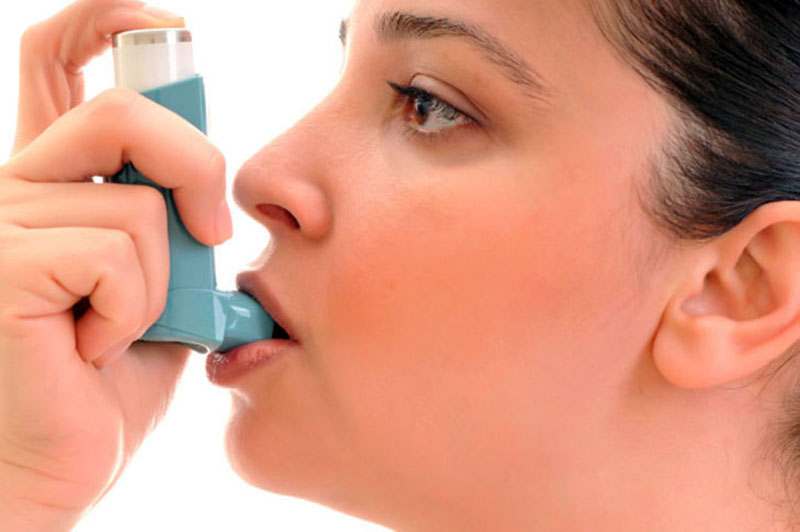9 Ways to Fight Asthma and Allergies
Asthma
Asthma is a lung condition that affects 23 million Americans, including 6 million kids. People with asthma may cough, wheeze, or have trouble breathing.
9 Ways to Fight Asthma and Allergies
Here are commonly used medications to treat asthma and the allergies that can trigger symptoms.
How to beat asthma
If you have asthma, there’s a good chance that an underlying allergy—whether it’s to dust mites, pollen, cockroaches, or cat dander—is playing a key role in your breathing problems. (About 60% to 90% of people with asthma have allergic asthma.)
The first step is to avoid the allergen, but that’s not always possible or sufficient to stop symptoms, like coughing, wheezing, and shortness of breath.
That’s where medication comes in. Here are some common drugs used to treat allergic asthma.
Inhaled corticosteroids
Inhaled corticosteroids are one of the most important therapies for any asthma, including allergic asthma.
“These are the gold standard and they work by basically blocking the inflammation response in the lungs,” says Mitchell H. Grayson, MD, associate professor of pediatrics, medicine, microbiology, and molecular genetics at the Medical College of Wisconsin in Milwaukee.
Known as “controller” medications, they take a few days to work—so they aren’t for short-term symptom control.
Leukotriene receptor antagonists
These drugs, like Singulair (montelukast sodium), can treat allergic asthma because they inhibit an inflammation-causing chemical released by the immune system. However, they can also treat non-allergic asthma too, says Jill Poole, MD, associate professor of internal medicine at the University of Nebraska Medical Center in Omaha.
The pros are that they come in pill form and they have few side effects. The drawback is that the effect is generally mild. “If you have mild persistent or mild intermittent asthma, sometimes they will work quite well,” Dr. Mitchell says.
Short-acting beta agonists
You know these inhalers—every asthmatic in the movies carries one to take an occasional puff. Known as “rescue medications,” these drugs act within minutes to quickly resolve symptoms.
“We warn everyone who has asthma to carry one of these,” says Dr. Poole.
Albuterol and related medications such as Maxair (pirbuterol) are bronchodilators, meaning they work by relaxing the airways. These drugs shouldn’t be used frequently (1-2 times a week or less). People with exercise-induced asthma can use one 20 minutes before working out to prevent problems, Dr. Mitchell says.
Long-acting beta agonists
People who find themselves using rescue medications on a frequent basis may need to switch to long-acting beta agonists, which can be effective for 12 hours or more, says Dr. Poole.
Common products include Advair (a combination of the beta agonist fluticasone and the steroid salmeterol) and Symbicort (a combination of the beta agonist formoterol and the steroid budesonide). A combination formulation (a beta agonist plus a steroid) is important as long-acting beta agonists on their own can worsen asthma.
Antihistamines
Antihistamines block the immune system chemical histamine, which is key in allergic reactions.
“If you have an allergy component to your asthma, they can be beneficial,” says Dr. Poole. Antihistamines are usually combined with inhaled corticosteroids or Singulair and can reduce inflammation in both the nose and the lungs. They are cheap, available over-the-counter, and have relatively few side effects. They’re quick acting so may help if you’re allergic to cats and are about to visit a friend with one, says Dr. Grayson. Antihistamines shouldn’t be used chronically.
Omalizumab (Xolair)
Xolair is one of the few drugs specifically for allergic asthma. It binds to immunoglobulin E (IgE), an antibody type produced in response to an allergen.
It won’t help non-allergic asthma, a type triggered by exercise, cold air, or other non-allergy irritants. (About 10% to 40% of all asthma cases are non-allergic).
Xolair is expensive so it is usually given in more severe cases, says Dr. Mitchell, such as people who have repeat trips to the emergency room. It’s an injected drug and has a boxed warning about a risk of anaphylaxis, a potentially life-threatening allergic reaction. (Doctors monitor for such reactions after giving the injections.)
Allergy shots
Allergy shots, or “immunotherapy” can be helpful in mild-to-moderate allergic asthma. The first step is to get a skin test to identify your allergens. Then you get a shot containing a small amount of the allergen (say, cat dander) about once a week. Four to six months later, you begin maintenance shots once every three-to-four weeks. Eventually, your body becomes desensitized to the substance, but this can take up to five years, says Dr. Poole. And it’s not clear how effective the shots are for anything other than hayfever, adds Dr. Grayson.
Oral corticosteroids
Oral corticosteroids, as opposed to inhaled steroids, are generally used in the short term for serious asthma attacks, says Dr. Mitchell. This stronger form of the drugs can cause potentially serious side effects if used in the long term.
If you still have symptoms and a controller medication isn’t doing enough to stop them, your doctor might want to give you oral steroids for four to five days to get you back into good health. Oral steroids, such as prednisone take 4-6 hours to take effect, Dr. Mitchell says.
Theophylline
Theophylline, sold under brand names such as Theo-24 and Uniphyl, is also a bronchodilator and has been used for relief of symptoms, particularly coughing at night.
It comes in pill form, which is a plus. But there are potential side effects ranging from diarrhea to neurological problems if the dose gets too high.
Patients have to have regular blood tests and the drug is “hardly used any more,” says Dr. Poole.
Deli ovaj sadržaj:















1 comment